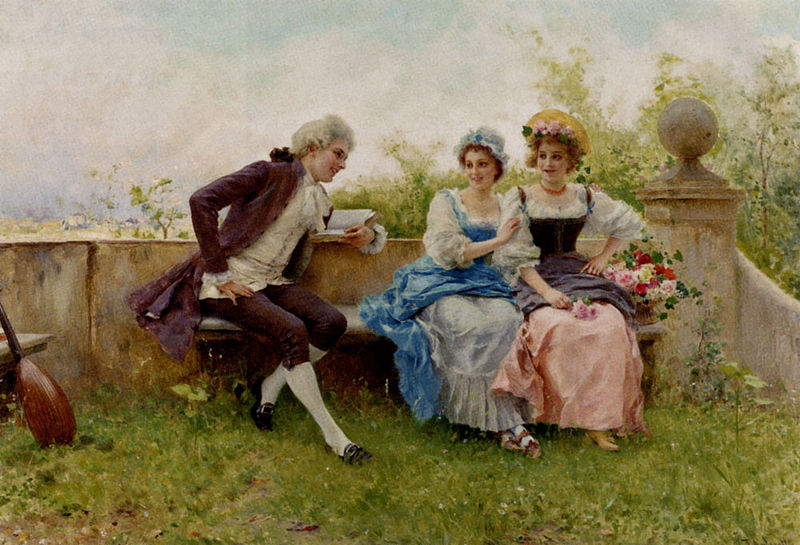Poetry Guides
 Every poet who starts out writing poetry, even if from an early age, is led by a sense of time, tempo and mood. These are basic elements that drives a person to write poetry. Yet, these are not enough to take the poet through with poetry that is consistent, rich in imagery and style and also scientifically designed. Yes, poetry, though an art form, is also a science. The science of writing good poetry demands that the writer follow specific guidelines and rules in order to claim expertise in that particular genre. Even if the poem is a free-verse, it has to follow specific rules.
Every poet who starts out writing poetry, even if from an early age, is led by a sense of time, tempo and mood. These are basic elements that drives a person to write poetry. Yet, these are not enough to take the poet through with poetry that is consistent, rich in imagery and style and also scientifically designed. Yes, poetry, though an art form, is also a science. The science of writing good poetry demands that the writer follow specific guidelines and rules in order to claim expertise in that particular genre. Even if the poem is a free-verse, it has to follow specific rules.
The set of guides in this sub-category aim to help the writer understand what each type of poem is all about. While the formats and guides are specific to each type, there is no limit to the poet's creativity, style and usage. The sky's the limit.
Image Credit: Wheatley Poems at Wikimedia Commons (Public Domain)
What Makes a Memorable / Quality Tanka?
 Memorable tanka are those that punch you right in the guts and leave your in awe and fascination. Does your tanka have this effect on readers? Read on to find out what Claire Everett thinks of quality tanka.
Memorable tanka are those that punch you right in the guts and leave your in awe and fascination. Does your tanka have this effect on readers? Read on to find out what Claire Everett thinks of quality tanka.
How to Write Tanka Poetry
 Tanka is the English variant of the Japanese 'waka', a form of quintain poetry. If you are new to writing tanka, this guide should help you grasp the form, structure and essence of a tanka. Read on to learn how to write a tanka poem.
Tanka is the English variant of the Japanese 'waka', a form of quintain poetry. If you are new to writing tanka, this guide should help you grasp the form, structure and essence of a tanka. Read on to learn how to write a tanka poem.
How to Write Good Poetry
 Just like music, poetry is the language of the soul. Although poetry is subjective, it can still stand out and have a 'wow' factor that makes it different from the general pool. What makes these poems different? What makes poetry really good that they are worth reading over and over again? Perhaps some of these points can help you understand how you may improve your mediocre poems to make a difference.
Just like music, poetry is the language of the soul. Although poetry is subjective, it can still stand out and have a 'wow' factor that makes it different from the general pool. What makes these poems different? What makes poetry really good that they are worth reading over and over again? Perhaps some of these points can help you understand how you may improve your mediocre poems to make a difference.
An Introduction to Tanka Poetry

How to Write a Shakespearean Sonnet
 William Shakespeare lived during the second half of the sixteenth century. He was instrumental in creating the form of poetry called the Sonnet. Between the years 1592 to 1598, Shakespeare wrote 154 sonnets. There are some basic features which encompass the science and art of writing a Shakespeare's sonnet; the outline for which is given in this guide.
William Shakespeare lived during the second half of the sixteenth century. He was instrumental in creating the form of poetry called the Sonnet. Between the years 1592 to 1598, Shakespeare wrote 154 sonnets. There are some basic features which encompass the science and art of writing a Shakespeare's sonnet; the outline for which is given in this guide.
Most Recent Articles
- Home Generators: The New Must Have Appliance
- Results of Annual Tanka Contest 2020
- Annual Tanka Contest 2020
- Results of CLIMATE CHANGE: THE BURNING ISSUE
- CLIMATE CHANGE: THE BURNING ISSUE
- Results of 'Where Tanka Prose Grows 2019'
- Where Tanka Prose Grows 2019
- Results of Tanka Time 2019
- Tanka Time 2019
- Results of "Where Tanka Prose Grows: 2018"
Visit us on...
Advertise With Us
For more details, contact
This email address is being protected from spambots. You need JavaScript enabled to view it.
__________________
TANKA
Contests
Mandy’s Pages Tanka Resources
Additional Reading
- Getting to the Heart of Tanka - 1
- Getting to the Heart of Tanka - 2
- Getting to the Heart of Tanka - 3
Book Reviews
- January, A Tanka Diary, by M.Kei
- Take Five: Best Contemporary Tanka, 1
- Take Five: Best Contemporary Tanka, 2
- Take Five: Best Contemporary Tanka, 3
- Take Five: Best Contemporary Tanka, 4
- Casting Shadows by David Terelinck
- A Solitary Woman by Pamela A. Babusci
Author Spotlight


